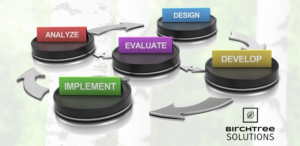Ten Tips to Better Job Aids

In a continuously evolving performance environment, job aids can be indispensable resources, offering point of need support to individuals as they navigate the intricacies of their roles. These tools come in various forms, from simple checklists and instructional guides to interactive digital platforms, each designed to streamline processes and boost efficiency. Not all job aids are created equal and so we have identified ten things to consider when designing a job aid.
- Clarity and Simplicity: A job aid should be clear and easy to understand. It should use simple language and avoid unnecessary jargon or complex terminology. The instructions or information provided should be concise and to the point, making it easy for users to grasp and apply the content quickly.
- Relevance: A job aid should be directly applicable to the tasks at hand. It should focus on providing the specific information or guidance required to complete a task or solve a problem. Irrelevant or extraneous details can confuse users and diminish the effectiveness of the aid.
- Accessibility: The job aid should be easily accessible to the individuals who need it. It could be in the form of a physical document, an electronic file, or an online resource. Accessibility also includes factors such as ensuring the aid is available in the appropriate language, format, and location.
- Visual Presentation: Utilize visuals such as diagrams, flowcharts, tables, or illustrations to enhance understanding. Visual aids can simplify complex concepts, clarify processes, and provide a quick overview of information. Well-designed visuals can make the job aid more engaging and easier to follow.
- User-Focused Design: Consider the needs and preferences of the target audience when designing the job aid. Understand their skill levels, prior knowledge, and preferred learning styles. Tailor the aid accordingly, using formats and structures that align with the users’ characteristics.
- Step-by-Step Guidance: When applicable, provide a step-by-step approach or a sequential process to guide users through the task or problem-solving process. This helps users follow a logical sequence and reduces the chances of errors or confusion.
- Contextual Examples: Include relevant examples or case studies to illustrate how the job aid can be applied in real-life situations. Examples help users understand the practical application of the information and provide a reference point for their own work.
- Regular Updates and Maintenance: Job aids should be periodically reviewed, updated, and improved based on user feedback and changing job requirements. Outdated or inaccurate information can hinder performance and lead to mistakes.
- Compatibility with Workflow: The job aid should seamlessly integrate into the existing workflow and not disrupt productivity. It should be readily available at the point of need, allowing users to access and refer to it easily during their work tasks.
- Training and Familiarization: Proper training and orientation on how to effectively use the job aid can significantly enhance its effectiveness. Users should be familiar with the purpose, content, and structure of the aid to maximize its value.
